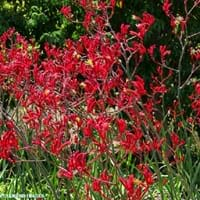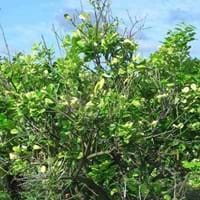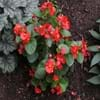Life Span
Perennial
Perennial
Origin
Australia
Southeastern Asia
Types
Not Available
Not Available
Habitat
Dry areas, Temperate Regions, Well Drained
Deep, gardens, old gardens, Well Drained
USDA Hardiness Zone
Not Available
9-11
AHS Heat Zone
Not Available
12-8
Sunset Zone
Not Available
H1, H2, 8, 9, 12, 13, 14, 15, 16, 17, 18, 19, 20, 21, 22, 23, 24
Habit
Clump-Forming
Oval or Rounded
Minimum Height
Not Available
Minimum Width
Not Available
Flower Color
Yellow, Red, Green, Purple, Orange
White
Flower Color Modifier
Not Available
Bicolor
Fruit Color
Green, Brown
Yellow, Green, Yellow green
Leaf Color in Spring
Green, Dark Green
Green
Leaf Color in Summer
Green, Dark Green
Green
Leaf Color in Fall
Green, Dark Green
Green
Leaf Color in Winter
Not Available
Light Green
Plant Season
Spring, Summer, Fall, Winter
Spring, Summer, Fall
Sunlight
Full Sun, Partial Sun, Partial shade
Full Sun, Partial Sun
Type of Soil
Loam, Sand
Loam, Sand
The pH of Soil
Acidic, Neutral, Alkaline
Acidic, Neutral
Soil Drainage
Not Available
Well drained
Bloom Time
Indeterminate
Spring, Late Spring, Early Summer, Summer, Late Summer, Early Fall
Tolerances
Drought
Drought
Where to Plant?
Container, Ground, Pot
Ground
How to Plant?
Seedlings, Tissue culture
Seedlings
Plant Maintenance
Medium
Medium
Watering Requirements
Average Water Needs
Average Water Needs, Water Deeply
In Summer
Lots of watering
Lots of watering
In Spring
Moderate
Moderate
In Winter
Average Water
Average Water
Soil pH
Acidic, Neutral, Alkaline
Acidic, Neutral
Soil Type
Loam, Sand
Loam, Sand
Soil Drainage Capacity
Not Available
Well drained
Sun Exposure
Full Sun, Partial Sun, Partial shade
Full Sun, Partial Sun
Pruning
Remove damaged leaves, Remove dead branches, Remove dead leaves
Prune for shortening long shoots, Remove damaged leaves, Remove dead branches, Remove dead leaves, Thinning
Fertilizers
All-Purpose Liquid Fertilizer
Apply N-P-K, can go long without fertilizers
Pests and Diseases
fungus
Armored scales, Fomes root rot, Mites, Red blotch
Plant Tolerance
Drought
Cold climate, Drought, Heat And Humidity
Flowers
Showy
Insignificant
Flower Petal Number
Single
Single
Fragrant Bark/Stem
No
Yes
Foliage Texture
Medium
Medium
Foliage Sheen
Matte
Glossy
Attracts
Birds, Hummingbirds
Birds, Butterflies
Allergy
Eye irritation, Skin irritation
Not Available
Aesthetic Uses
Showy Purposes
Bonsai
Beauty Benefits
Not Available
Not Available
Environmental Uses
Air purification
Air purification
Medicinal Uses
Not Available
Blood purifier, Digestion problems, Digestive disorders
Part of Plant Used
Buds, Flowers
Fruits, Leaves
Other Uses
Cut Flowers
Making Shampoo, Used as insect repellent
Used As Indoor Plant
No
No
Used As Outdoor Plant
Yes
Yes
Garden Design
Container, Cutflower, Feature Plant, Houseplant, Mixed Border, Tropical
Container, Edible, Fruit / Fruit Tree, Hedges, Mixed Border
Botanical Name
ANIGOZANTHOS
CITRUS hystrix
Common Name
Kangaroo Paws
Kaffir Lime, Makrut
In Hindi
Kangaroo Paws
काफ़िर लाइम
In German
Kangaroo Paws
Kaffernlimette
In French
Kangaroo Paws
combava
In Spanish
Kangaroo Paws
cafre
In Greek
Kangaroo Paws
Καφρός Lime
In Portuguese
Kangaroo Paws
Kaffir Lime
In Polish
Kangaroo Paws
kaffir wapno
In Latin
Kangaroo Paws
Cafres Lime
Phylum
Not Available
Tracheophyta
Class
Not Available
Magnoliopsida
Order
Commelinales
Sapindales
Family
Haemodoraceae
Rutaceae
Genus
Anigozanthos
Citrus
Clade
Angiosperms, Commelinids, Monocots
Angiosperms, Eudicots, Rosids
Tribe
Not Available
Not Available
Subfamily
Conostyloideae
Not Available
Number of Species
Not Available
Season and Care of Kangaroo Paws and Kaffir Lime
Season and care of Kangaroo Paws and Kaffir Lime is important to know. While considering everything about Kangaroo Paws and Kaffir Lime Care, growing season is an essential factor. Kangaroo Paws season is Spring, Summer, Fall and Winter and Kaffir Lime season is Spring, Summer, Fall and Winter. The type of soil for Kangaroo Paws is Loam, Sand and for Kaffir Lime is Loam, Sand while the PH of soil for Kangaroo Paws is Acidic, Neutral, Alkaline and for Kaffir Lime is Acidic, Neutral.
Kangaroo Paws and Kaffir Lime Physical Information
Kangaroo Paws and Kaffir Lime physical information is very important for comparison. Kangaroo Paws height is Not Available and width Not Available whereas Kaffir Lime height is 180.00 cm and width 240.00 cm. The color specification of Kangaroo Paws and Kaffir Lime are as follows:
Kangaroo Paws flower color: Yellow, Red, Green, Purple and Orange
Kangaroo Paws leaf color: Green and Dark Green
Kaffir Lime flower color: White
- Kaffir Lime leaf color: Green
Care of Kangaroo Paws and Kaffir Lime
Care of Kangaroo Paws and Kaffir Lime include pruning, fertilizers, watering etc. Kangaroo Paws pruning is done Remove damaged leaves, Remove dead branches and Remove dead leaves and Kaffir Lime pruning is done Prune for shortening long shoots, Remove damaged leaves, Remove dead branches, Remove dead leaves and Thinning. In summer Kangaroo Paws needs Lots of watering and in winter, it needs Average Water. Whereas, in summer Kaffir Lime needs Lots of watering and in winter, it needs Average Water.





